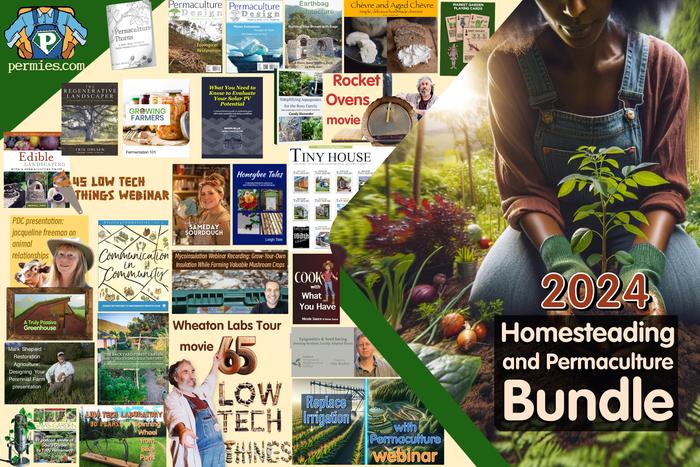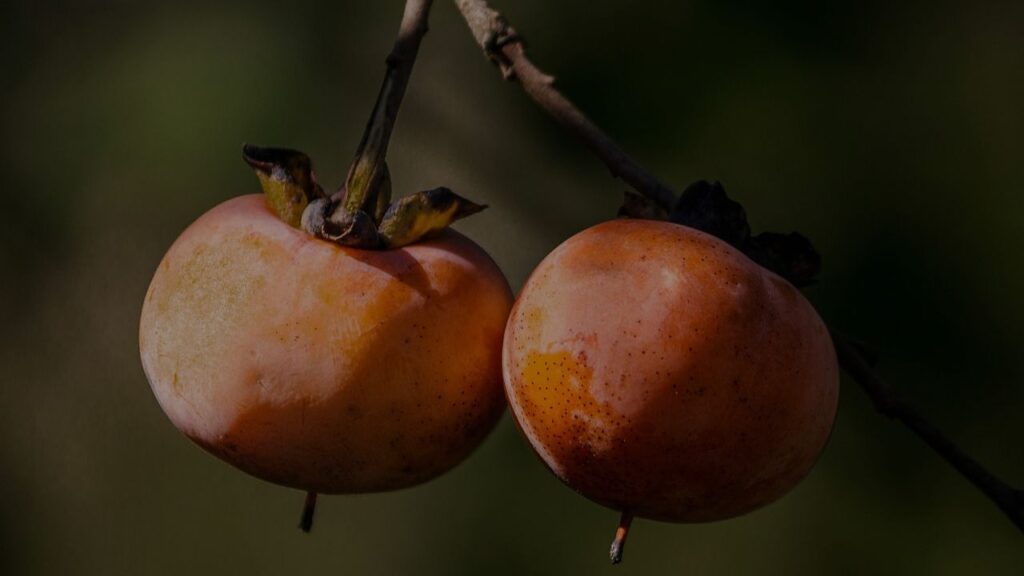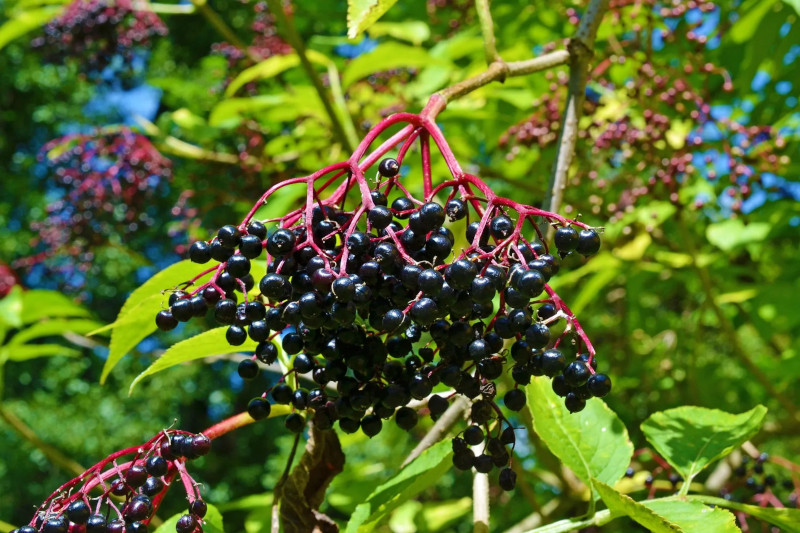How to grow your own persimmon trees
The wild American persimmon is a puzzling fruit. If you pick it when it looks ripe, it will taste like alum – weirdly bitter and chalky. Your mouth puckers up, but not like from a lemon.
Yet if you wait until your senses are telling you that they are “too ripe”, persimmons are wonderful – fruity, with caramel tones, almost like a date.
Wild persimmons have a ratio of a lot of seeds vs. fruit. Some people think it isn’t worth it. Many people favor the Asian persimmons, which I don’t care for very much.
What can you do with wild persimmons? You can make jelly/jam with the fruit. The persimmon tree is also a good source of food for wildlife. Persimmon trees will still be laden with fruit after the leaves fall, and will hold fruit later into the Fall and Winter in some parts of the country. Hunters tell stories of deer that walk through a field, hear a wild persimmon drop, and turn around and come back to the tree.
As noted below, I have about a 50% success rate from persimmon trees that were purchased from the KS forestry service making it through the first winter – due to my clay soil, winter cold, or deer pressure. So I decided to save foraged seed, stratify, and then sprout them out myself.
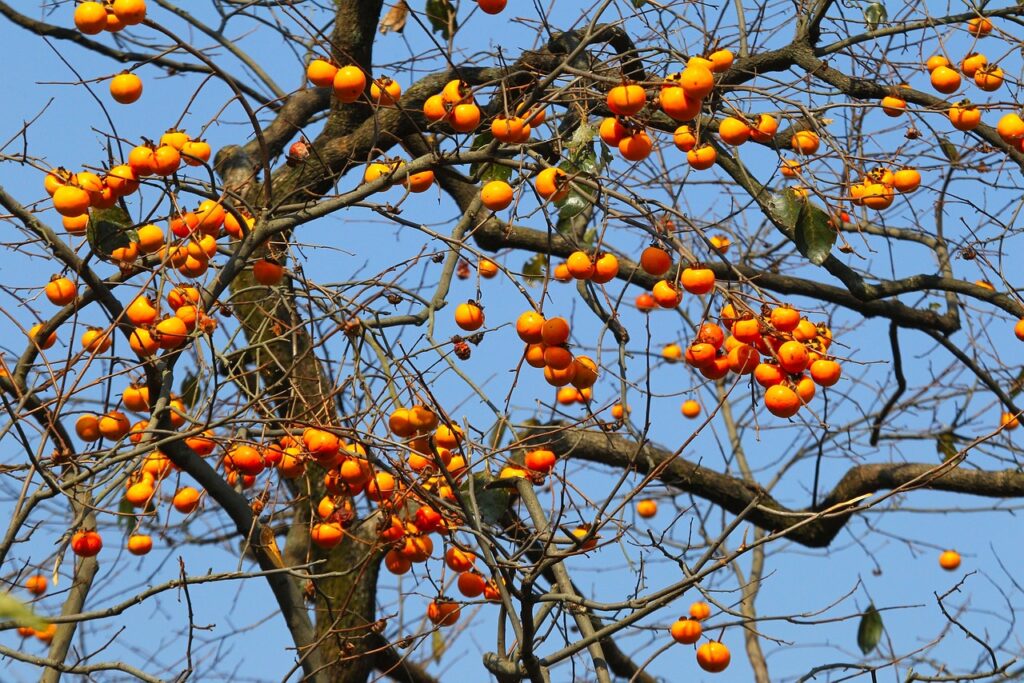
Saving persimmon seeds
I foraged persimmons from local trees, gathering fruit that was already over-ripe. I may even pick up some fruit that has dropped.

Step 1:
Using a fork, or your fingers, mush the persimmon up and separate the seeds from the fruit. It will look like this:
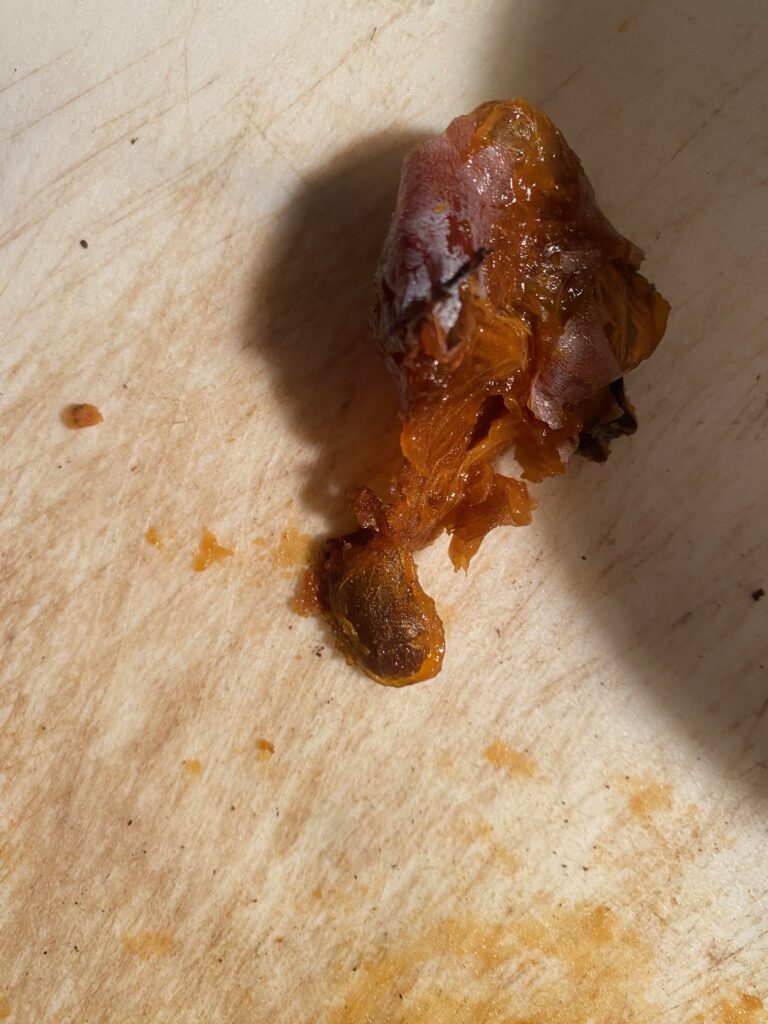
Step 2:
You will not be able to fully remove the goop around the seeds. Much like pawpaws, the persimmon has a fleshy membrane seed coat that is difficult to remove.

You will not be able to fully remove the goop around the seeds. Much like pawpaws, the persimmon has a fleshy membrane seed coat that is difficult to remove.
I ran them under water and ran across a screened sieve to get as much off as possible, but it still had quite a bit of membrane left on it.
Step 3:

Like pawpaws, I soaked them overnight in water. This loosened the membranous seed coat. I was then able to use a spoon and fingernails to peel off the membrane, with just the seed left.

Saving and Stratifying the persimmon seeds
Some sites recommend adding the seeds to soil or peat and cold stratifying by keeping in the refrigerator for the winter. I have not had much luck with this – the seeds either dry out or get moldy.
So, like chestnuts, I will store them in buckets of sand.
I got bored with taking off the seed coat, so I will experiment with one batch with the seed coat on and one off.
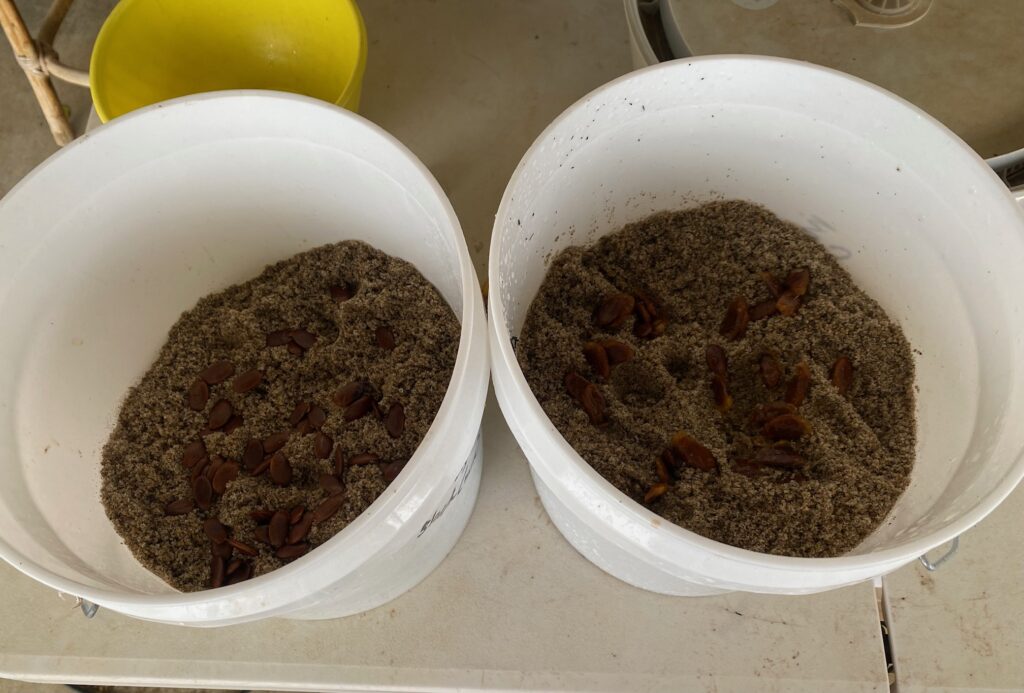
I filled 2 gallon buckets (with holes drilled in the bottom) a little more than half full with sand, layered out the persimmon seeds, then covered with a light layer of sand. I put a lid on the bucket and stored it in the garage, now that it is cold enough to cold stratify them.
I will check them again in April. Once sprouted out, I will transfer them to 5 gallon buckets of soil, or tree pots.
Transplanting persimmons
After transferring the sprouted persimmon seeds to larger buckets or tree pots with soil, I will separate and put into other buckets or pots as needed. I will let them grow for a full growing season. When they go dormant in the Fall/Winter, I will transplant into the food forest or pasture/field.
Persimmon trees need to be planted about 25 feet apart but I have had about 50% success with persimmons making it through the first winter (even with trees bought from the KS forestry service), so I overplant them and will thin them as needed.
You may also be able to use your persimmon trees that you grew from seed as rootstock to graft on Asian varieties. Grant Payne has also heard that some have successfully grafting peach scions onto persimmon rootstock. Might be worth a try.
Good luck with your persimmon trees. Follow up and let me know of your success and any lessons learned in the process.

This article is cross posted from ThrivingNews.com – Thriving Community news, without the Noise.



Check out the NEW 2024 Homesteading Bundle from Permies, which has 35 e-books, courses, videos.
What I really liked:
- The Backyard Forest Garden e-book
- Agroforestry
- Restoration Agriculture: Designing Your Perennial Farm presentation from Permaculture Voices by Mark Shepard
- Permaculture Thorns, A Book About Trying to Build Permaculture Community, by Paul Wheaton.
- Plus 2 books by Nicole Sauce.
